As a finishing material for bathrooms, wall panels constitute a confident competition for tile, and in some respects surpass it. Consumers are increasingly paying attention to an inexpensive and practical way of decorating, which allows you to repair with little money and in a short time.
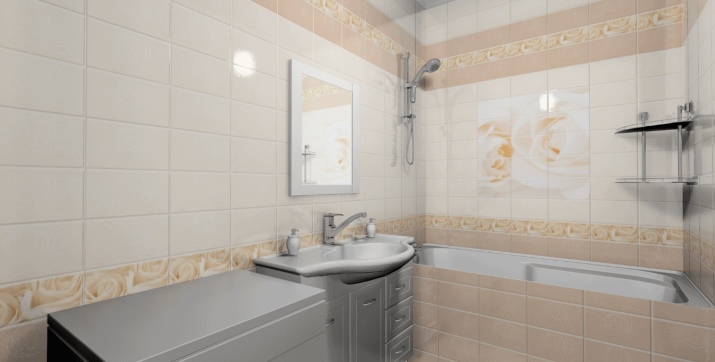
Advantages and disadvantages
High consumer demand and the growing popularity of panels are due to a number of important advantages of this material.
- Panels for bathrooms are on the market in a wide range. This greatly facilitates the selection of the desired option and allows you to purchase a coating of any color and design. On sale there is a large selection of panels that very naturally imitate tiles, wood and natural stone. With the right selection of shades and proper combination of textures, it is very difficult to distinguish such surfaces from the original.
- Bathroom Panels Waterproof and not prone to accumulation and retention of moisture. This completely eliminates the risk of mold and pathogens.
- Due to the even and smooth surface, the panels fully meet sanitary and hygienic requirementspresented to the interior decoration of bathrooms and bathrooms. They are easy to clean, are not prone to the accumulation of static electricity and do not attract dust.
- Due to the fact that most models are mounted on a frame, there is no need to align walls and ceilings. This greatly simplifies the repair process, saving owners from the difficult preparation of work surfaces before applying the finish.
- Frame installation and panel installation is a very simple process, to cope with which is affordable for a person who does not have experience in finishing work.
- Due to the composite structure of the panel surfaces in case of damage or breakdown of an individual element, it is easily replaced with a new one, without dismantling the entire lining.
- Compared to tile, wall panels are lightweight and do not create a significant load on the supporting structure.
- Due to high wear resistance the service life of such a coating is 10 years or more.
- During operation, the material is not subject to deformation. and retains its original form throughout its life.
- The price range of wall panels is very wide. This allows you to choose and buy a very simple plain models, as well as a solid coating with imitation of expensive materials.
- Thanks to the crate free space is formed between the panels and the wall, allowing you to place electrical and plumbing communications in it.
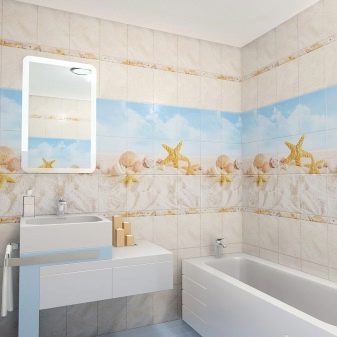
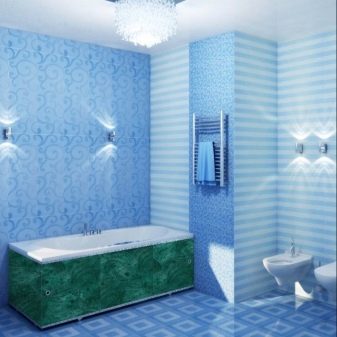
The disadvantages of wall panels are not many. These include the tendency to burn out plastic models, reducing the useful area of the room due to the installation of the frame and low resistance to mechanical and shock loads of PVC products. Another minus is restriction of the use of particleboard panels in places of intense water ingress, for example, near a washbasin or shower.
This is due to the fact that even with minimal damage to the protective layer, water will begin to penetrate into the plate, causing its deformation and destruction.
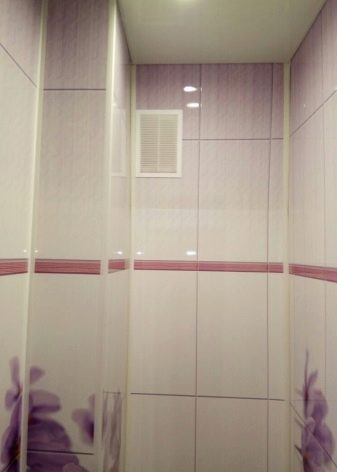
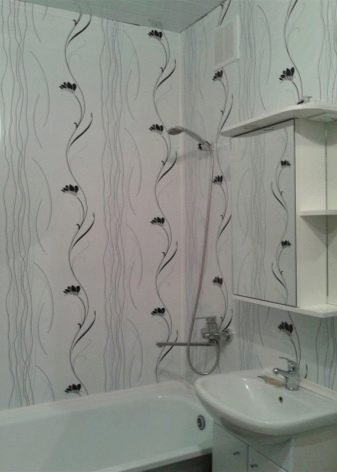
Kinds
The classification of wall panels for the bathroom is made according to criteria such as design features and material of manufacture. According to the first sign, several finishing options are distinguished, a detailed description and technical characteristics of which are presented below.
- Rack-mounted panels are the largest group and are represented by lamellas up to 340 cm long, 10 to 30 cm wide and 8 to 12 mm thick. Each of them is equipped with a thorn-groove lock, which allows you to assemble elements into a common surface like a puzzle. The large length of the models allows you to install them in very high rooms without the need for intermediate joints. Rack panels are available in a huge assortment of textures and colors, have a low cost and visually raise the ceilings when placed vertically.
The disadvantages of long meters include the difficulty of installing alone and the need to control the position of each lamella using the building level during installation.
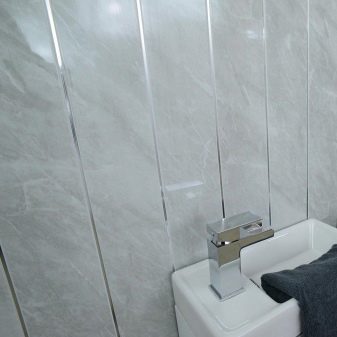
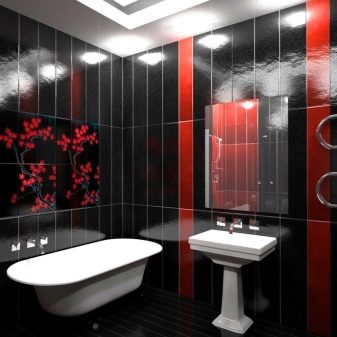
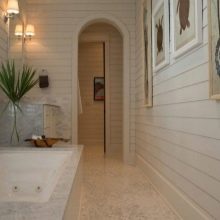
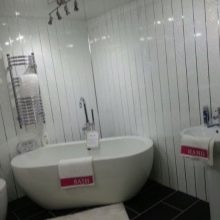

- Square Panel Panels represent individual elements, the length of which varies from 30 to 98 cm. This allows you to do the installation yourself and not spend money on the services of masters. Each square, as a rule, has a beautiful pattern, effectively emphasizing the geometry of the bathroom. Such material is well suited for small rooms and fits seamlessly into the interior.
Squares of different colors and textures can be combined in various variations, creating interesting surfaces. The advantages of square-type models include low cost, easy installation, the possibility of fragmentary replacement of the damaged element without dismantling the entire coating and a wide selection of colors and designs.
Among the minuses, the need for an ideal fit of joints is noted, since the “playing” tile will look rather messy.
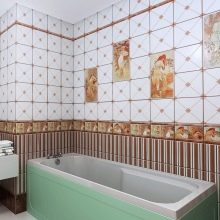
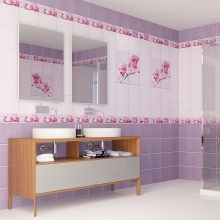

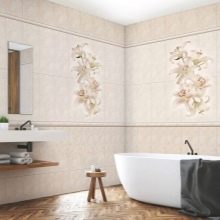
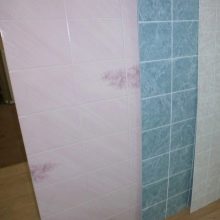
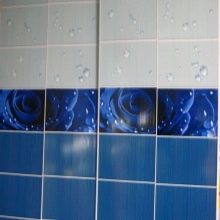
- Flexible sheet panels reach 1.2 m in width and more than 2.4 m in length and are well suited for large bathrooms. The advantages of sheet material include a minimal number of joints and an absolutely smooth surface. Among the minuses, there is a difficult installation due to the overall dimensions of the sheets, as well as the need to dismantle and replace the entire canvas in case of accidental damage to a small area.

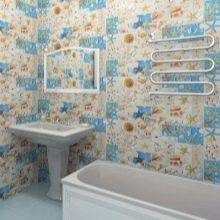
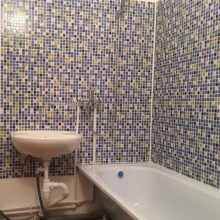
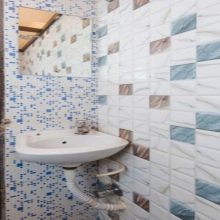


Materials
The next criterion for the classification of wall panels for the bathroom is the material from which they are made. Currently used for their production MDF, laminated particleboard, particleboard, PVC, acrylic and glass.
PVC
The most affordable option for decorating the walls of the bathroom are models made of polyvinyl chloride, well known as plastic panels. They are available in a wide variety of colors and designs and have long been leaders in sales in the category of low-cost finishing materials. Plastic coating is characterized by absolute moisture resistance and resistance to mold and fungus.
Provided that the walls are perfectly even, installation can be carried out without building a frame by attaching panels directly to the wall surface. Such models are very well cut and bent, which allows them to finish not only the walls, but also use them to form multilevel curved ceilings.
The disadvantages of PVC panels include a rustic appearance, a tendency to fade and low resistance to shock.

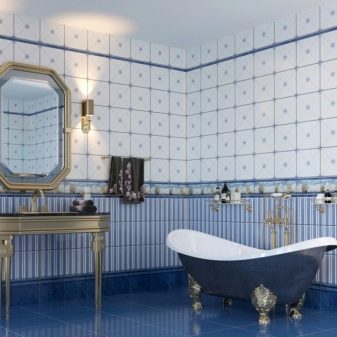
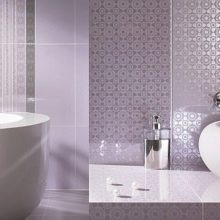
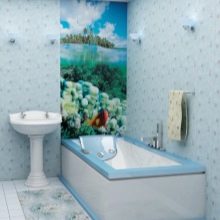

Acrylic
Acrylic panels appeared relatively recently, but were immediately appreciated by the consumer. For their production, synthetic resins with various additives that affect transparency and determine the color of products are used. Acrylic panels allow you to create beautiful glossy surfaces that visually expand the space and make it unusually light.
Among the advantages of acrylic cladding can be noted resistance to mechanical stress, light weight, easy maintenance, water resistance, a wide range of colors and complete environmental safety. There is only one drawback of such panels - their price, which far exceeds the cost of other materials for wall decoration.
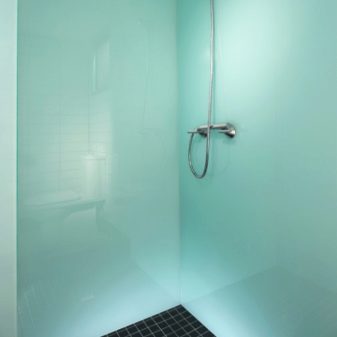
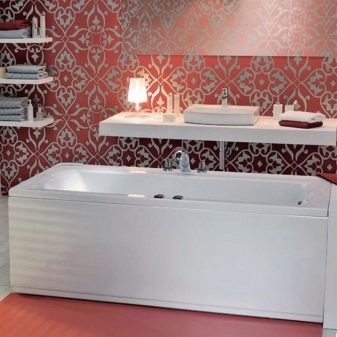
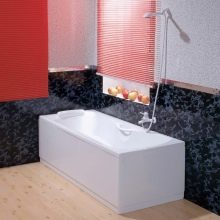
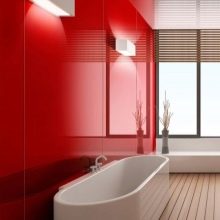
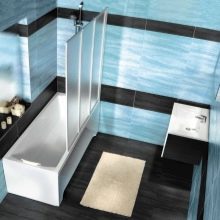
Fiberboard
For the design of bathrooms often use a laminated wood fiberboard (fiberboard). Wood boards are pre-impregnated with a special water-repellent composition and laminated on top. The most optimal option for wet rooms are panels impregnated with a bituminous composition and bearing the name hardboard.
Installation of such panels is carried out directly on the wall and requires prior alignment of the surface. However, there is a positive point in this: provided the walls are even, work can be done as soon as possible, and the absence of a frame has a beneficial effect on the size of the room.
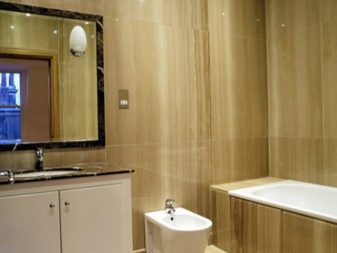
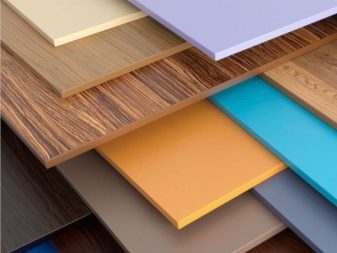
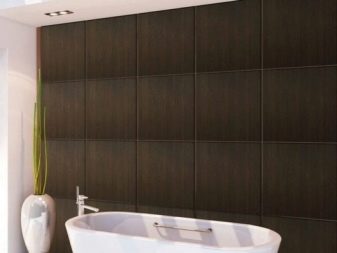
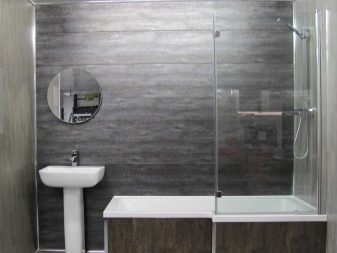
Chipboard
To finish the bathrooms use moisture-resistant chipboards, which, like the previous material, are pre-impregnated and laminated. But if possible, then it is better to give preference to other materials, as panels made of chipboard in conditions of high humidity have very low performance properties. In addition, synthetic substances releasing formaldehyde are used as a binder component in their manufacture. And although the content of this element is seriously normalized, it is still better not to risk it.
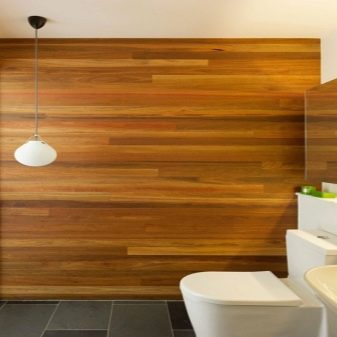

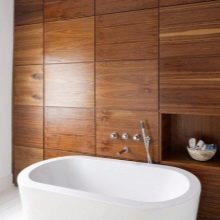
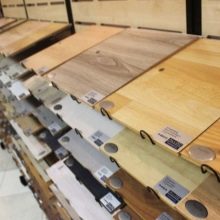

MDF
This material is environmentally friendly and has high performance properties. It is absolutely not hygroscopic, it tolerates temperature fluctuations well and does not deform from time to time. In addition, MDF is considered a good heat and sound insulator, it is resistant to mechanical stress and easy to care for.
To the touch, the material resembles plastic and is available in a wide variety of textures. This allows you to simulate the finish with natural and artificial stone, wood and tile. Due to the presence of a thin transparent and very durable polymer film MDF panels can be used in direct water areas.
Among the minuses, the need for careful lubrication of interpanel seams with a waterproof sealant is noted, otherwise moisture will get into the material and begin to destroy it.
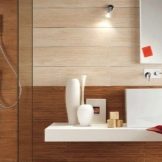
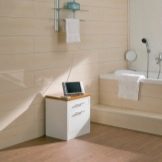
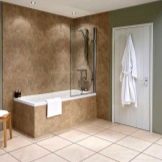

Glass
Moisture-resistant glass panels are also used for wall decoration in the bathroom. For their manufacture, high-quality quartz glass is used, which is highly resistant to shock and has an attractive appearance. Among the disadvantages of glass trim can be noted high cost and the need for constant washing of walls. The last requirement is due to the fact that on the glass surface, dried drops of water, dirty spots and fingerprints are very clearly visible.
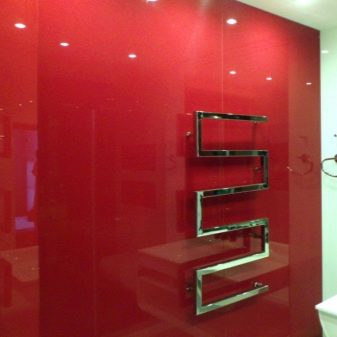
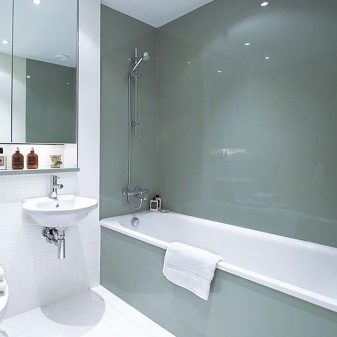
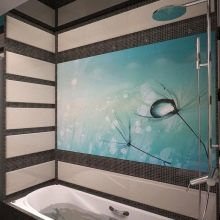
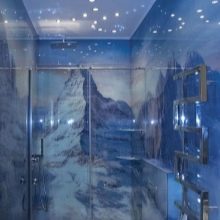
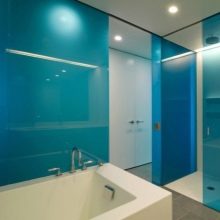
Water panels
For the manufacture of such models, a fiberglass mesh filled with expanded clay is used. This composition makes the surface resistant to moisture and temperature extremes. Externally waterproof aqua panels look very aesthetically pleasing, they are mounted on the frame using glue or self-tapping screws.
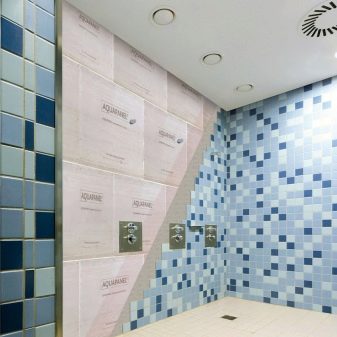
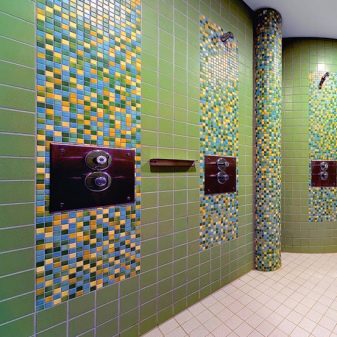
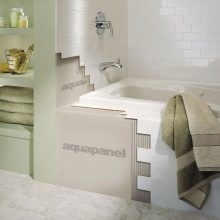

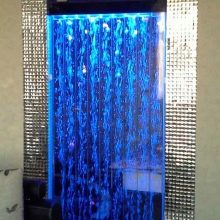
Natural wood
Modern technologies allow impregnation of wood with a special composition, which allows it to be used in wet areas of the bathroom. For the manufacture of wall panels using maple, alder, oak, cedar and wenge. Wooden panels make the room very attractive and solid. The surface is coated with varnish, wax or oil for greater certainty. repel not only water, but also dirt.
The only disadvantage of wood panels is their price.
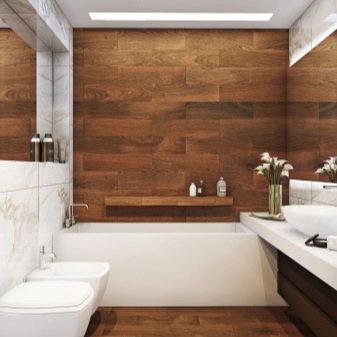
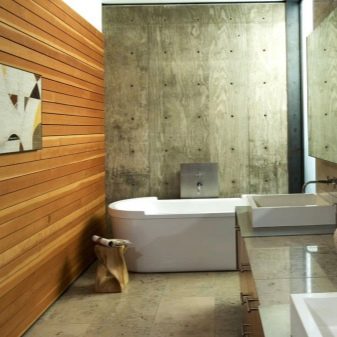
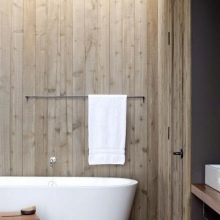
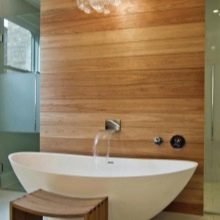
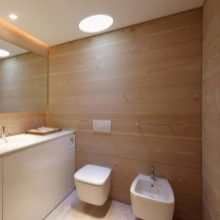
Colors and Design
Wall waterproof panels for bathrooms are available in a wide variety of colors and textures. The most popular design is imitation of tile., which even repeats exactly the seams: they are slightly recessed inward and painted in a different color. The similarity with real tiles is so striking that visually catching the difference is almost impossible. Also popular geometric patterns which do not require fitting the picture, which simplifies installation.
This may also include mosaic design, also very popular in bathrooms. Modern technologies allow you to apply photo printing on the panel, so you can get a wall covering with a panoramic view of the big city or the image of a flower.
As for the color scheme, modern manufacturers produce panels of all kinds of colors, starting with dazzling white gloss and ending with a matte black tone.
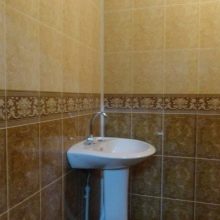
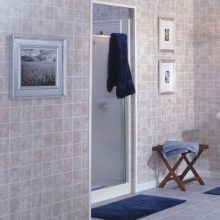
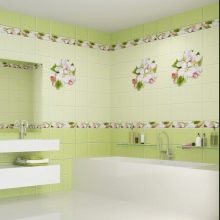
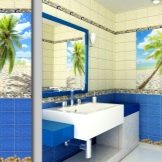
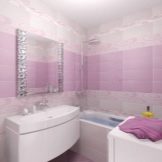
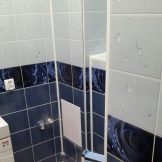
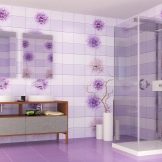
How to choose?
Before you purchase a bathroom panel, It is advisable to familiarize yourself with the recommendations of professionals.
- All panels must be from the same batch, otherwise, slight differences in shades are possible.
- Packaging must be intact and clean. In case of damage, it is better to refuse to buy the material.
- If there is no packaging, then carefully inspect all lamellas. In the event of chipping or chipping, do not make a purchase.
- You need to purchase material with a margin of 10-15%, since the probability of damage to the elements during installation always exists. In addition, if during the further operation of the room one of the lamellas is damaged, it can easily be replaced with a similar one.
- When buying panels from chipboard you must make sure that the packaging has a marking that permits their use for interior decoration of wet rooms.

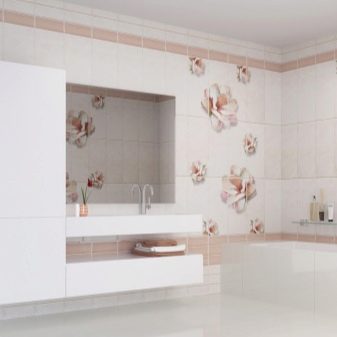
Subtleties of installation
Paneling the walls of the bathroom can be done in two ways. In the first case, a frame of wooden lath with a cross section of 1x3 cm is installed on the wall, on top of which panels are mounted. The frame is attached to the wall with dowels, and the panels themselves are attached to the crate using nails or a construction stapler. The correct installation of each lamella is controlled by the level and, if necessary, lay a gasket.
The gap between the panel and the floor (ceiling) should be 1 cm. After the installation of the last element, the corner joints are closed with corners, the gaps near the door slopes with end moldings, and the cracks near the floor and ceiling with special skirting boards.When installing the crate, you need to remember that with the horizontal placement of the lamellas, the battens of the crate are fixed vertically and vice versa.
The second method involves installing panels directly on the walls and requires prior alignment and priming of work surfaces. The gluing of elements should begin from the corners, which in the future eliminates the need for complex fitting of corner elements. The first lamella is installed indented from the ceiling, floor and adjacent wall of 1 cm. This panel will serve as a guide for further installation. Glue on the panel is applied in the form of a thin zigzag every 50 mm of the lamella width. Accidentally formed chips and potholes larger than 2 mm are filled with cement mortar, putty and grinded.
After the last element is installed in place, the joints are closed with moldings and baseboards.
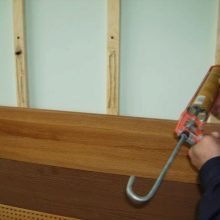
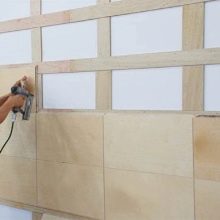
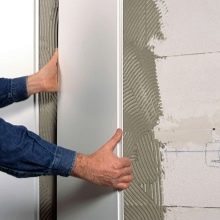
Good examples in the interior
Facing the walls of the bathroom with panels allows you to not only quickly and inexpensively design a room, but it also makes it possible to realize the most daring design developments and realize unusual interior solutions.
PVC wall panels perfectly imitate modern tiles.
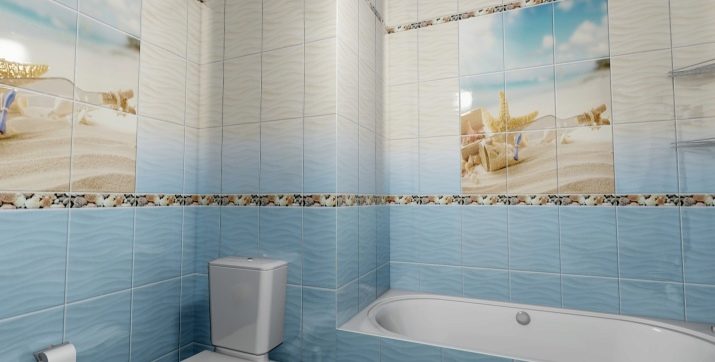
The ability to use photo printing allows you to design a bathtub in any thematic style.

Glass panels give the room a stylish look and aesthetic appearance.

Facing from MDF looks very elegant and noble.
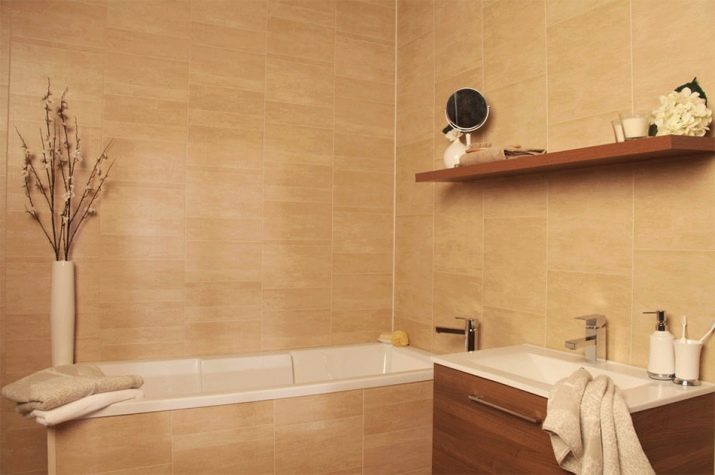
Wooden panels in the interior of the bathroom are a natural and noble style.
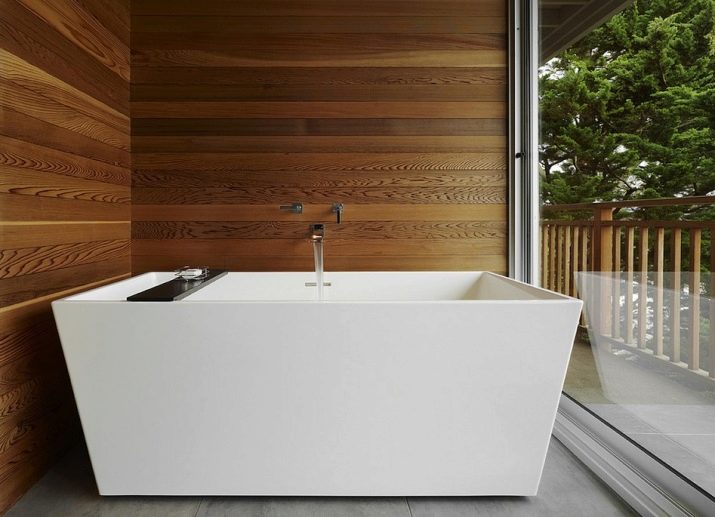
For what are the wall panels for the bathroom, see the next video.










